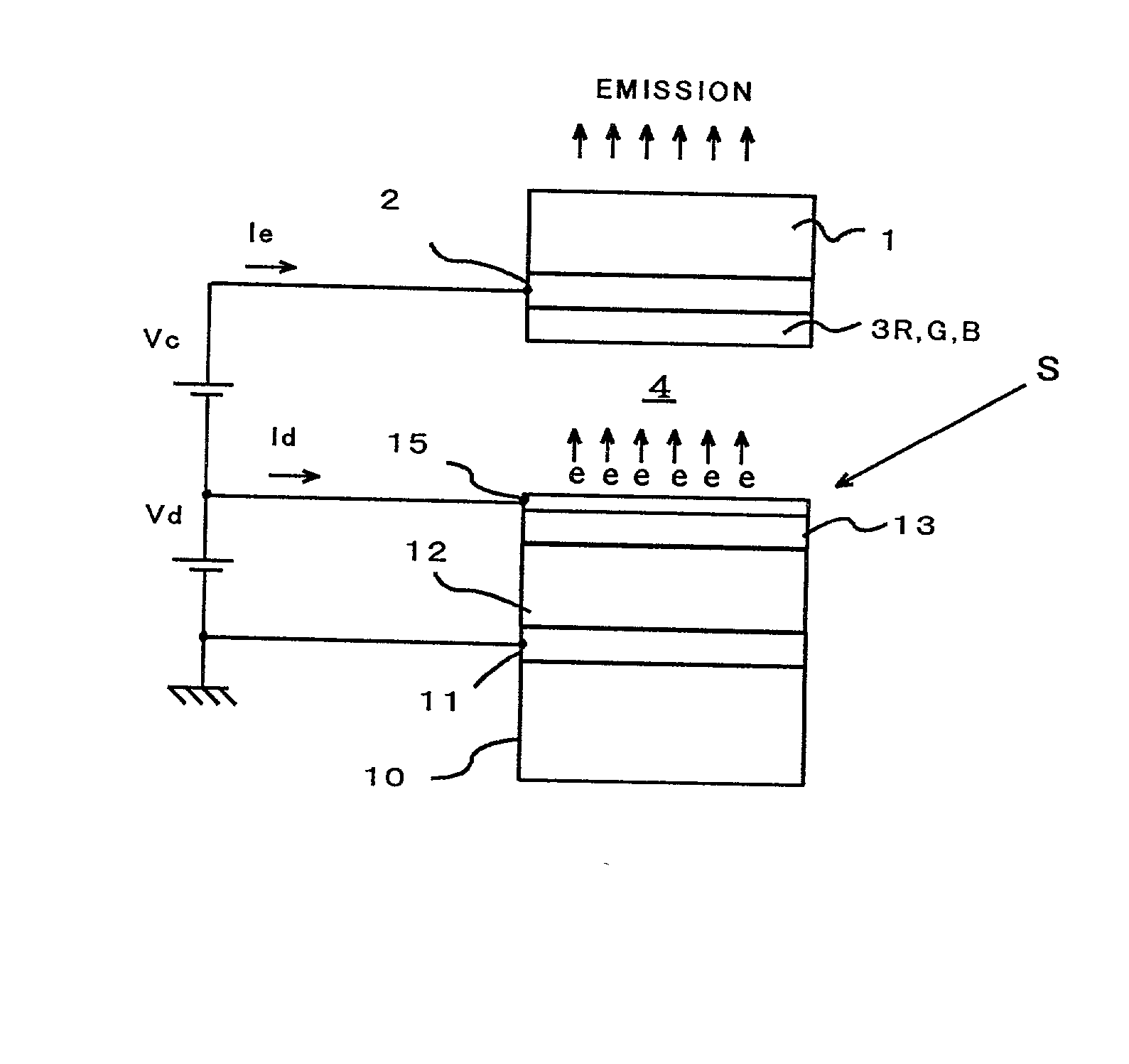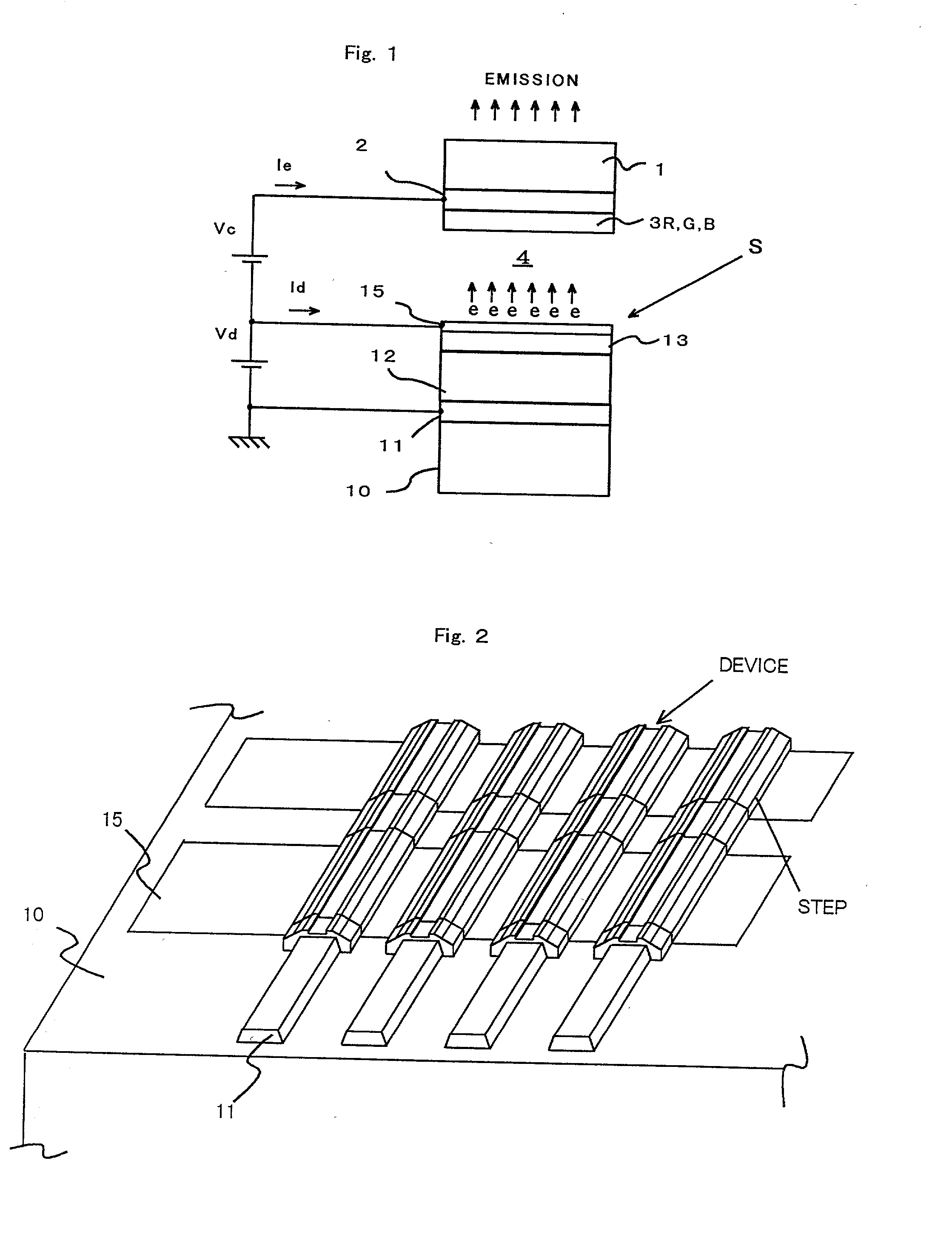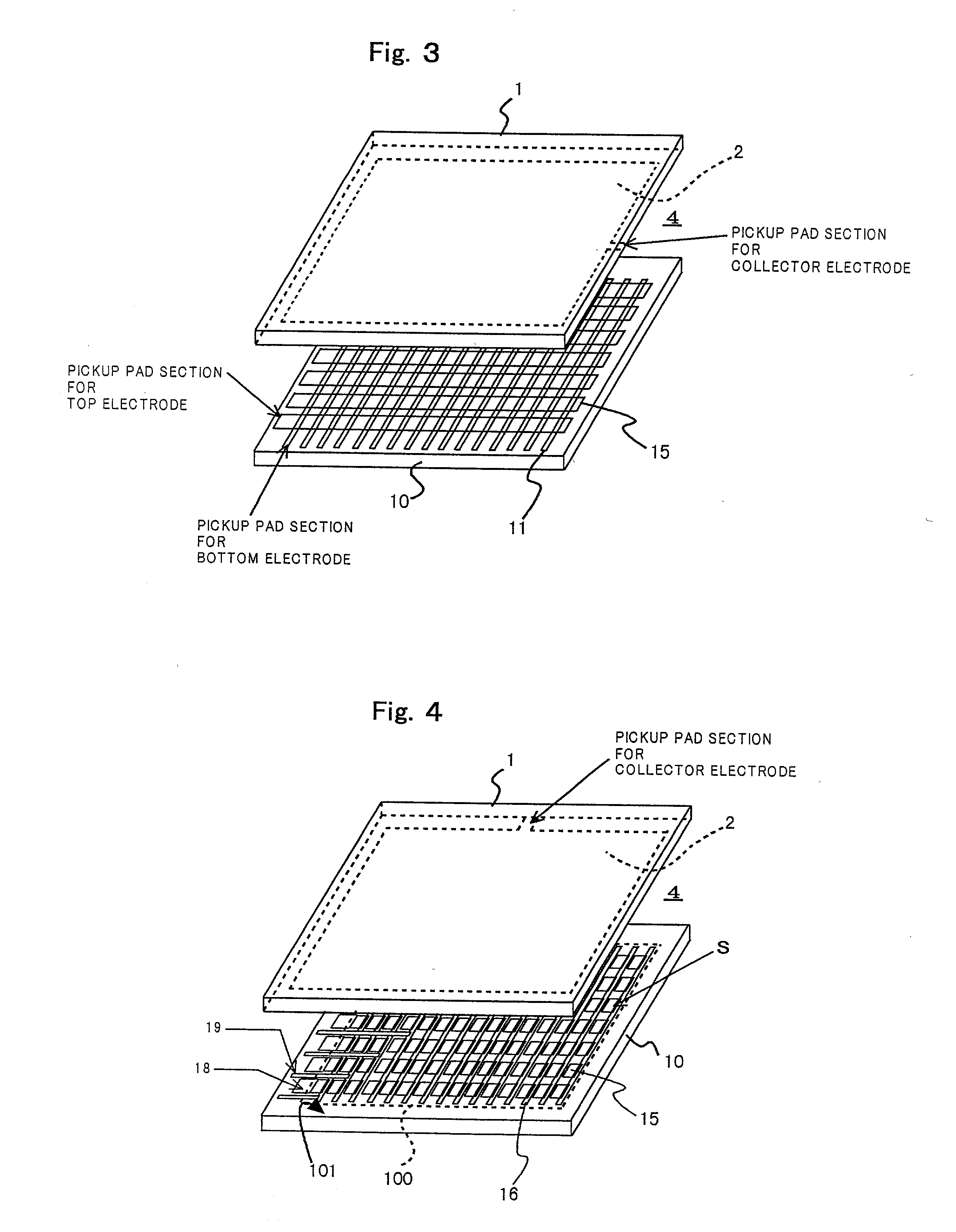Flat panel display device
a display device and flat panel technology, applied in the field of flat panel display devices, can solve the problems of undesirable electrode pickup sections, a large amount of time and labor, and the system involves a great difficulty in adjusting the tones and luminance of respective panels, so as to avoid the breakage of the bus electrodes
- Summary
- Abstract
- Description
- Claims
- Application Information
AI Technical Summary
Benefits of technology
Problems solved by technology
Method used
Image
Examples
Embodiment Construction
[0078] A flat panel display device was actually fabricated with specifications (1) through (6) as shown below using a sputtering process for film formation and then characteristics of the same were examined. (1) Bottom electrodes: Cr, Cu, and Cr films having thicknesses of 50 nm, 1 .mu.m, and 100 nm, respectively. (2) Semiconductor electron supply layer: Si layer having a thickness of 4 .mu.m. (3) Insulator layer: SiO.sub.x layer having a thickness of 330 nm. (4) Top electrode: Pt film having a thickness of 40 nm. (5) Bus electrodes: Cr, Cu, and Cr films having thicknesses of 50 nm, 1 .mu.m, and 100 nm, respectively. (6) Second external repeating terminals: Cr, Cu, and Cr films having thicknesses of 50 nm, 1 .mu.m, and 100 nm, respectively. (7) First, second, and third insulating protective films: SiO.sub.x films having a thickness of 350 nm.
[0079] The bottom electrodes (1) and semiconductor electron supply layers (2) were formed in the form of lines on a glass substrate which had b...
PUM
 Login to View More
Login to View More Abstract
Description
Claims
Application Information
 Login to View More
Login to View More - R&D
- Intellectual Property
- Life Sciences
- Materials
- Tech Scout
- Unparalleled Data Quality
- Higher Quality Content
- 60% Fewer Hallucinations
Browse by: Latest US Patents, China's latest patents, Technical Efficacy Thesaurus, Application Domain, Technology Topic, Popular Technical Reports.
© 2025 PatSnap. All rights reserved.Legal|Privacy policy|Modern Slavery Act Transparency Statement|Sitemap|About US| Contact US: help@patsnap.com



